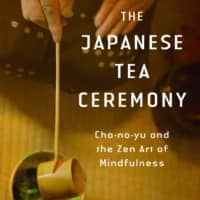An early celebrant of Japanese tea ceremony, A.L. Sadler’s classic text examines in minute detail the origins of tea drinking and the rich and complex components of its ritualization. These include tearoom architecture, the aesthetics of tea gardens, utensils employed in the ceremony and the final presentation of rinsed and dried tea bowls for the scrutiny and appreciation of guests.
Okakura Kakuzo’s 1906 text, “The Book of Tea,” is much consulted for its philosophical appreciation of a ceremony in which, “humanity has met in a teacup.” Kakuzo’s work predates Sadler’s book and concerns itself primarily with the supreme refinements of “teaism” in an exclusive cultural milieu. If the ceremony, as the tea masters say, takes 10 years of applied study to fully understand, we begin to grasp why entire books might be devoted to the subject.
The “art of mindfulness” in the title of this edition, published in 2019, is an addition to Sadler’s original work, first published in 1930, an effort, perhaps, to channel a popular interest in practices like meditation and shinrinyoku (“forest bathing”).
That perplexing Buddhist adage “Tea is Zen, Zen is tea” is almost enough to send you back to a comforting dependence on tea bags, but after finishing Sadler’s compendium, Kakuzo’s aesthetic slant on the subject and a sound, generic title like Laura C. Martin’s “A History of Tea: The Life and Times of the World’s Favorite Beverage,” you should be able to more than hold your own at any gathering of devotees of the brew.


















With your current subscription plan you can comment on stories. However, before writing your first comment, please create a display name in the Profile section of your subscriber account page.